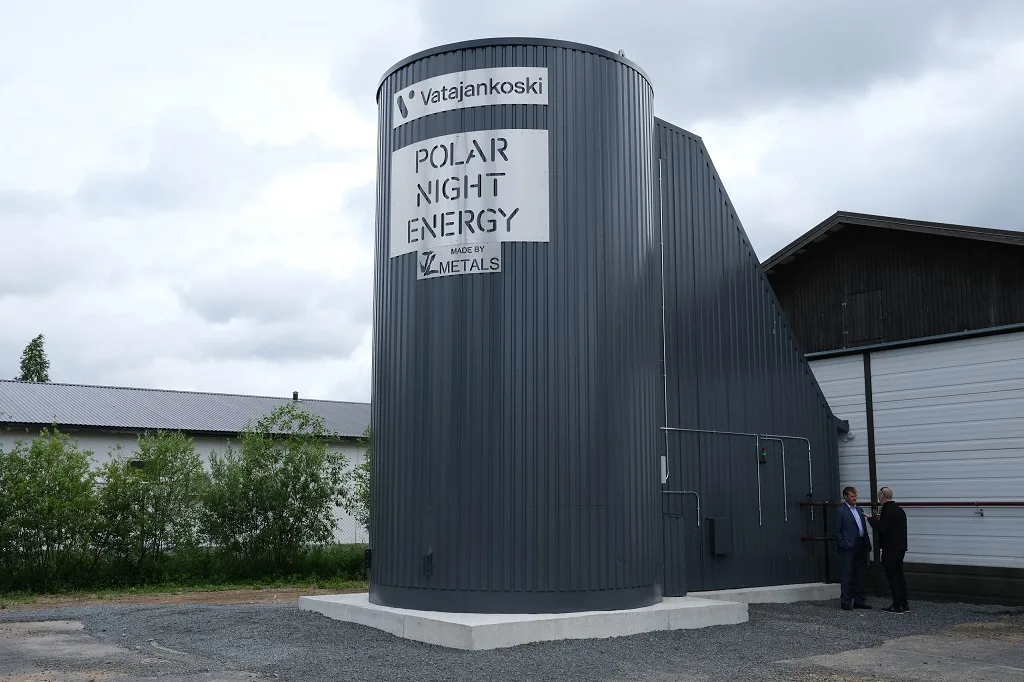Revolutionary Power Storage: Exploring Sand Battery Technology

Sand battery technology, a groundbreaking approach to energy storage, leverages the high heat capacity of sand to store and generate electricity. This innovative concept was derived from the need for more sustainable and efficient energy storage solutions, especially critical in the era of increasing renewable energy use.
The technology utilizes inexpensive and abundant sand to store energy in the form of heat, which can be converted back to electricity when needed. The method promises an environmentally friendly and cost-effective alternative to traditional battery storage systems, providing long-duration energy storage solutions.
Historical Development of Sand Batteries
The development of sand batteries began in the early 2010s, pioneered by a Finnish company seeking alternatives to lithium-ion based storage systems. The concept was initially explored as a means to improve the storage of solar energy captured during peak sunlight hours and use it during periods of low solar activity.
Over the years, the technology has been refined and scaled up to accommodate larger energy storage requirements. Key advancements have included improving the efficiency of heat exchange systems and integrating the technology with existing renewable energy installations.
By the late 2010s, several pilot projects had successfully demonstrated the viability of sand batteries, leading to increased interest and investment from both the public and private sectors.
Applications of Sand Battery Technology
Sand battery systems are primarily used in conjunction with renewable energy sources such as solar and wind power. These systems store excess energy produced during peak generation times and release it during demand spikes or low production periods, thus stabilizing the grid.
In addition to grid stabilization, sand batteries are employed in industrial settings where high-temperature heat is required. The stored thermal energy can be used directly in industrial processes, reducing reliance on fossil fuels and enhancing energy efficiency.
The technology is also being tested in residential settings, providing homeowners with a more sustainable way to manage home energy use by storing excess solar energy generated during the day.
Moreover, sand batteries are being explored for use in remote locations where traditional energy infrastructure is not feasible or too expensive to deploy, offering a reliable and sustainable energy solution.
The Potential of Sand Battery Technology
The potential of sand battery technology is vast, with implications for both environmental sustainability and economic efficiency. Its ability to provide long-duration storage at a lower cost than traditional batteries could revolutionize energy storage practices globally.
Environmental benefits include reduced reliance on toxic and scarce materials like lithium, which are commonly used in other battery technologies. Additionally, the lifecycle of a sand battery is significantly longer than that of lithium-ion batteries, leading to less waste and environmental degradation.
From an economic perspective, the use of cheap and abundant materials like sand drastically reduces the cost of energy storage, making renewable energy systems more accessible and affordable for a broader range of applications and markets.

Broader Applications of Sand Battery Technology
Beyond its current applications, sand battery technology holds promise for several other sectors. In the agricultural sector, for instance, it could provide a reliable energy source for powering farm equipment and processing facilities, particularly in remote areas.
Urban planning could also benefit from this technology, as cities seek to become more sustainable. Sand batteries could be integrated into district heating systems, providing a greener alternative to conventional heating methods.
Furthermore, the technology could play a crucial role in disaster-stricken areas, offering an immediate and reliable power supply for emergency services and reconstruction efforts without the logistical challenges of fuel-based generators.
Sustainable Solution or Just a Hype?
As the world moves towards more sustainable energy solutions, sand battery technology stands out not just as a temporary trend but as a potential mainstay in the future energy landscape. With ongoing advancements and increasing global focus on sustainability, the technology is poised for broader adoption and continuous improvement.
The scalability of sand batteries makes them a viable option for various settings, from small communities to large cities, potentially transforming how energy is stored and used across the globe. As such, the future of sand battery technology looks promising, with the potential to contribute significantly to global energy sustainability and security.
However, the success of sand batteries will depend on continued research, development, and support from policy makers to overcome any technical and market challenges, ensuring that this innovative technology reaches its full potential.
